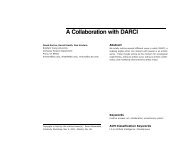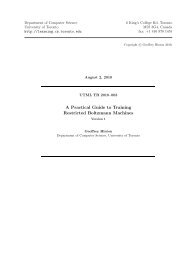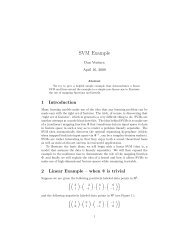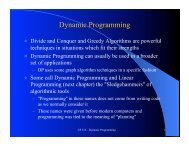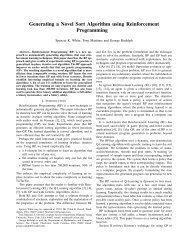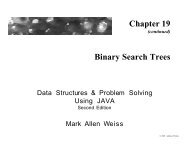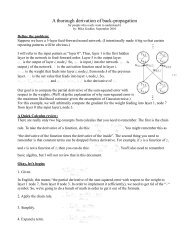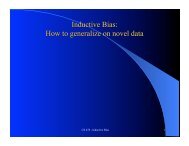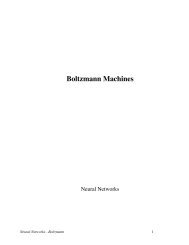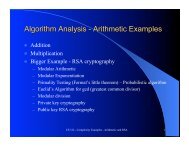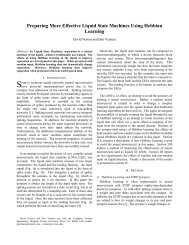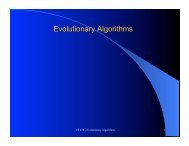A Bradley-Terry Artificial Neural Network Model for Individual ...
A Bradley-Terry Artificial Neural Network Model for Individual ...
A Bradley-Terry Artificial Neural Network Model for Individual ...
You also want an ePaper? Increase the reach of your titles
YUMPU automatically turns print PDFs into web optimized ePapers that Google loves.
8 Joshua Menke, Tony Martinez<br />
rate is low enough. This is because the delta rule is using gradient descent<br />
on an error surface that is strictly convex. Notice that the <strong>for</strong>mulation of<br />
the delta rule in (5) does not include the derivative of the sigmoid. The<br />
sigmoid’s derivative, namely Ouput(1 − Output), is also the inverse of the<br />
derivative of a different objective function called cross-entropy. There<strong>for</strong>e,<br />
this version of the delta rule is minimizing the cross-entropy instead of the<br />
squared-error. The cross-entropy of a model is also known as the negative<br />
log-likelihood. This is appealing because the resulting fit will produce the<br />
maximum likelihood estimator. Despite not strictly minimizing the squarederror,<br />
this method will still converge to the global minimum because the<br />
direction of the gradient <strong>for</strong> minimizing either function is always the same. In<br />
summary, the standard <strong>Bradley</strong>-<strong>Terry</strong> model can be fit by reparameterizing<br />
it as a single-layer ANN, and then training it with the delta rule.<br />
3.2 Individial Ratings from Groups<br />
In order to extend the ANN model given in 3.1 to learn individual ratings,<br />
the weights <strong>for</strong> each group are obtained by averaging the ratings of the individuals<br />
in each group. Huang et. al (Huang et al., 2005) used the sum of<br />
each group which in the ANN model is analagous to having each individual<br />
have an input of 1 if they are on the winning team, −1 if they are on<br />
the losing team, and 0 if they are absent. This model assumes that when<br />
there are an uneven number of individuals on each team, the effect of one<br />
individual is the same in all situations. Here the average is used instead so



